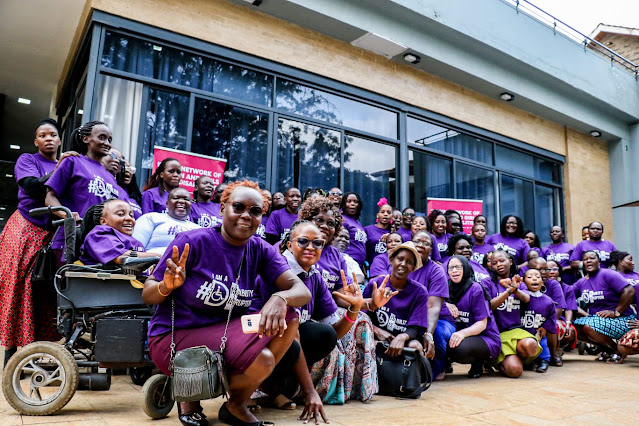Interventions around Menstrual Health and Hygiene Must Be Inclusive of Women and Girls with Disabilities
Menstrual Hygiene Day is an Annual Awareness Day marked on May 28 each year. In this article Network Members, Angeline Akai (Kenya Society for the Blind) and Elizabeth Mang’eni (You4She Initiative) talk about the need for conversations on menstrual health and hygiene to include girls and women with disabilities. Barriers that hinder access to menstrual health and hygiene for women and girls with disabilities must be eliminated,’ they note. Read on……………..
The theme of menstrual hygiene day 2022 is making menstruation a normal fact of life by 2030. The overarching goal is to build a world where no one is held back because they menstruate.This is the day to highlight the importance of menstrual care and raise awareness about the issues women and girls face in accessing menstrual health products such as sanitary pads, tampons, and menstrual cups.
Over the past years, there have been conversations with regards to access, health and hygiene information and products. This conversation has revolved around how information is delivered to girls and women. However, the conversations and interventions exclude girls and women with disabilities. This is due to barriers such as accessibility in terms of accessing menstrual products and information in accessible formats. For instance there is no use of sign language in sanitary advertisements in our local media stations.
The most rarely spoken about is how menstrual product manufacturers overlook consumers with disabilities. Most sanitary pads, tampons, or menstrual cups are not a better fit for women and girls who use assistive devices or have no limbs such as hands and/or legs.
For women and girls who use prosthesis legs, wheelchairs, calipers, or crutches, the sanitary pad cannot be properly kept in place, which in the process causes leakage or even worse falls off during movement. Those without hands or fingers also find it difficult to tear the packet and insert the sanitary pad into their panty or insert the tampon or menstrual cup correctly.
Likewise, Menstrual Hygiene Education for women and girls with disabilities is not openly discussed by menstrual hygiene campaigners despite the intensified awareness in primary and high schools in Kenya thus leaving them behind.
Availability and high cost of menstrual products pauses a challenge to women and girls with disabilities in the rural areas causing them to opt for alternative solutions such as using rags, leaves, animal skins, and even cow dung that exposes them to multiple infections.
Women and girls with disabilities must be treated with dignity by creating inclusive policies and interventions around menstrual health and hygiene and also creating an enabling environment where they enjoy their human rights to the fullest. This is done by eliminating barriers that hinder access to menstrual health and hygiene by women and girls with disabilities.




Comments
Post a Comment